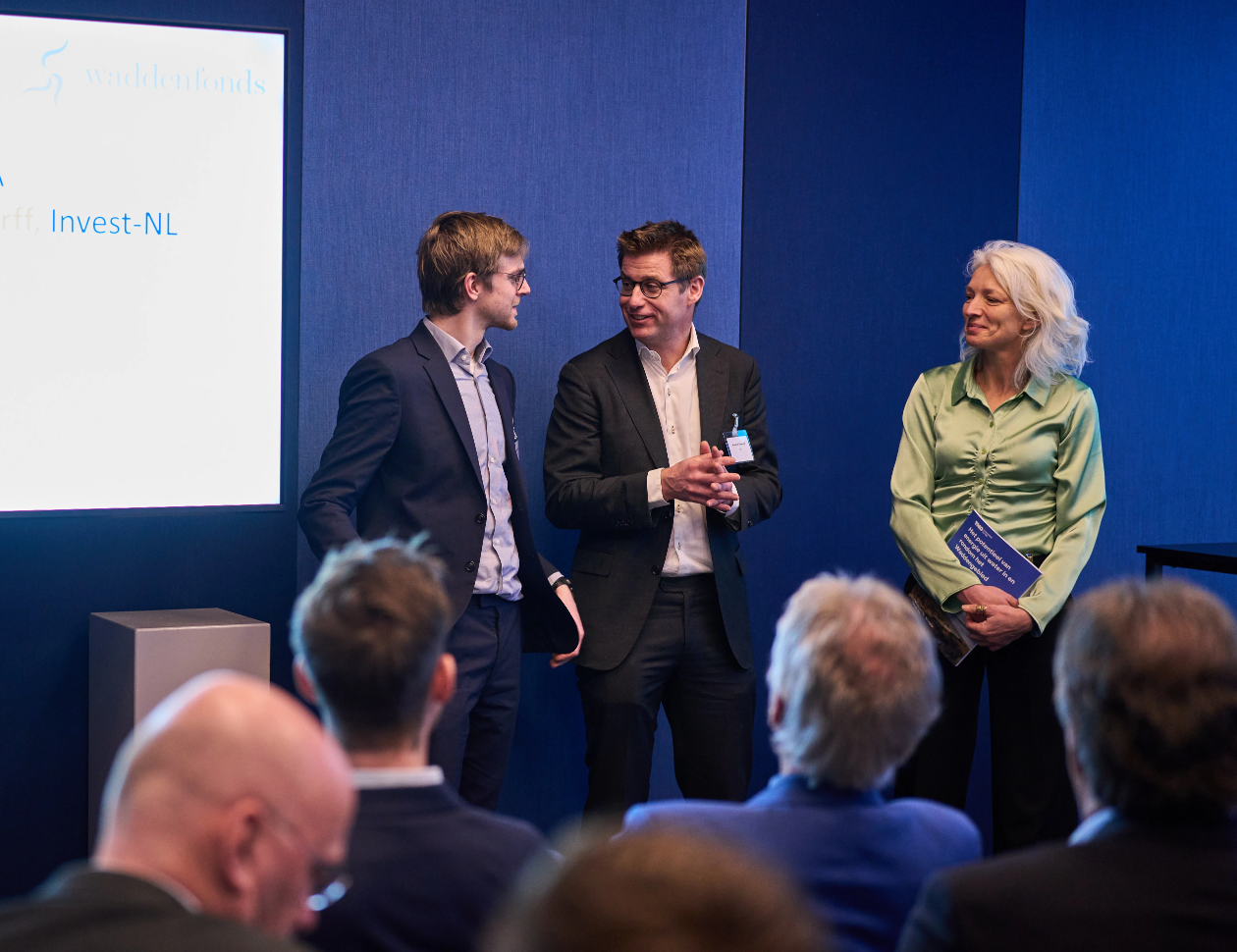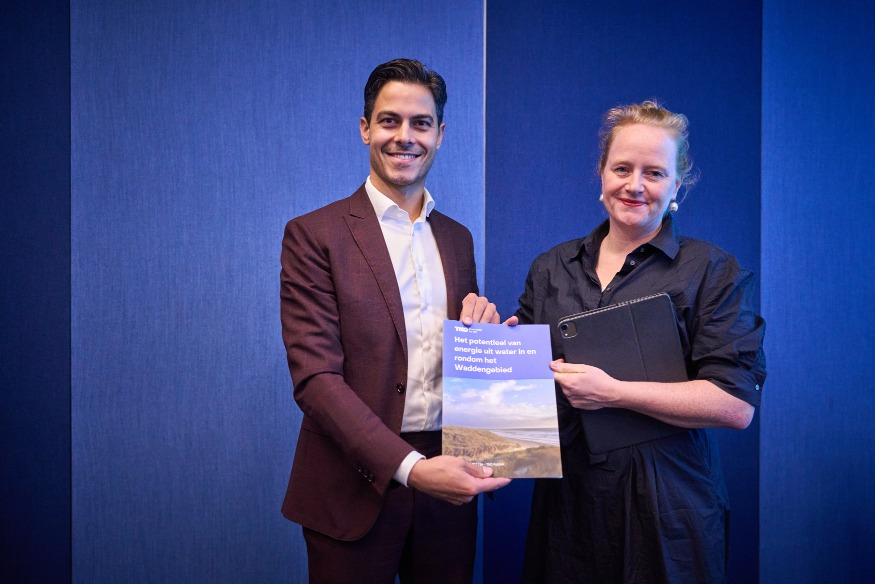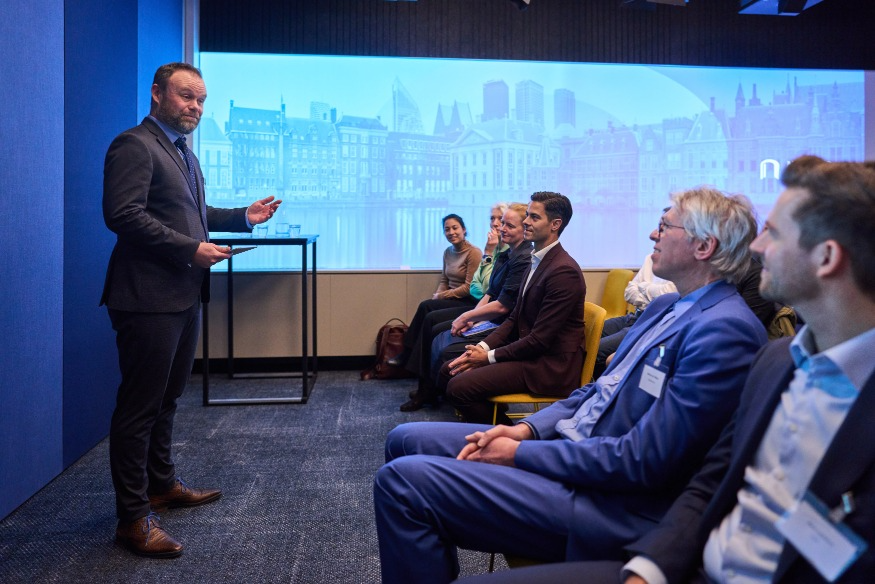
Independent Dutch research organisation TNO examines six technologies for energy from water, power generation from Wadden Sea promising
Energy generation from water has great potential in the Wadden Sea region and could provide the Wadden Islands with 83% of their electricity demand as early as 2030, if a number of conditions are met. By that year, the Wadden Sea could also supply 8% of households in the coastal region with electricity. That conclusion is reached by research institute TNO based on research into six different initiatives from the business community for extracting Energy from Water (EuW). Dutch climate minister Rob Jetten received the research report in The Hague on Wednesday morning. According to the Wadden Fund, it is now up to the central government: laws and regulations need to be adapted. In addition, investments are needed to realise the intended upscaling by 2030.

In the study, TNO looked at energy generation from wave action, from tidal action and from mixing salt and fresh water. During the event our own Maarten Berkhout presented SeaQurrent and our TidalKite. The study was commissioned by the Wadden Fund in cooperation with the provinces of Friesland and Groningen, the North Holland Wadden Sea municipalities and two development organisations: the North Holland North Development Company and Invest-NL.
With this outcome of the study, the northern provinces are calling on the central government to accelerate the scaling-up of EuW in order to jointly realise a further roll-out in the Wadden Sea. “The deployment of other green power complementary to wind and solar energy is crucial in the coming years to meet the climate goals in the Wadden region,” said Rosan Kocken, chair of the Wadden Fund and delegate for North Holland. The TNO study shows that Energy from Water can substantially contribute to making the islands completely self-sufficient in the medium term. On top of that, households in the coastal area can be supplied with 20% to 40% of their electricity demand.
This would require EuW installations in the Wadden Sea and along the North Sea coast with a combined capacity of around 300 megawatts. That capacity will only come about if, in the period up to 2030, governments enable upscaling to market-ready technologies; by removing regulatory bottlenecks; by (financial) support for further scaling up and by a broader than just cost-based assessment framework.

Many benefits
The TNO study reviewed six existing Energy from Water (EuW) techniques. REDstack (energy from mixing fresh and salt water), Slow Mill (energy from wave action) and SeaQurrent (energy from tidal ebb and flow) are 3 techniques that are already supported in practice by the Wadden Fund and tested in the Wadden area. Furthermore, three new techniques of Dutch Wave Power and Symphony Wave Power (both from wave power) and FLEB (tidal) were investigated. The researchers recommend betting on all six initiatives to increase the chances of achieving Wadden Fund targets.
Energy from Water has a number of advantages. Waves and tides are there all year round and can therefore complement other sustainable energy sources well. Local generation in the Wadden Sea allows direct delivery to users. This reduces the need to transport power to the islands. “Energy from Water can contribute to making the power supply more stable,” Kocken said. “Additional generation sources are needed. Energy from Water is one of the most promising.”
Removing obstacles
To accelerate the development of EuW, the central government must remove barriers in the short term. TNO indicates that this requires “regulatory and legal changes that give grid operators more room to take other factors into account when considering the order in which projects are connected.” Therefore, the Wadden Fund advocates that the national government figures out how this can be better regulated so that the EuW technologies do not soon miss the boat.
Producers of offshore wind and solar energy are now at an advantage. They have access to the grid while EuW technologies do not yet have such access under the Dutch Electricity Act. Financing connection to the EuW grid is necessary to balance the business case in the start-up phase and to enable further scaling up and further development of the technologies around 2030.
Previous research shows that Energy from Water does not cause substantial damage to the environment and nature of the Wadden Sea and coastal area. Also, energy generation under water is less visible than on land. New nature is sometimes even created; Slow Mill and SeaQurrent have added new spawning areas for fish in the sea and new shellfish beds grow on the bottom anchors. However, some remaining questions about the ecological impact of multiple installations still need to be answered. This research will be supported by the Wadden Fund as part of the next scaling-up phases of these techniques.
Source: het Wadden Fonds
Pictures: Phil Nijhuis
View the full rapport (in dutch)
*About TNO:
TNO is an independent not-for-profit research organisation composed of units, councils and a services organization. A safer, healthier, and more sustainable life. That’s what TNO is all about. As an independent research organisation, they are the driving force behind innovation. They make knowledge serve the common good.
About the Waddenfonds:
The Wadden Fund was established to give a sustainable and qualitative impulse to the ecology and economy of the Wadden area. The Wadden Fund do this by financially supporting initiatives in the Wadden area that contribute to the realisation of their (main) objectives. Entrepreneurs, foundations and associations as well as local authorities can apply for a subsidy to carry out a project. In doing so, they like to see parties cooperate with each other.